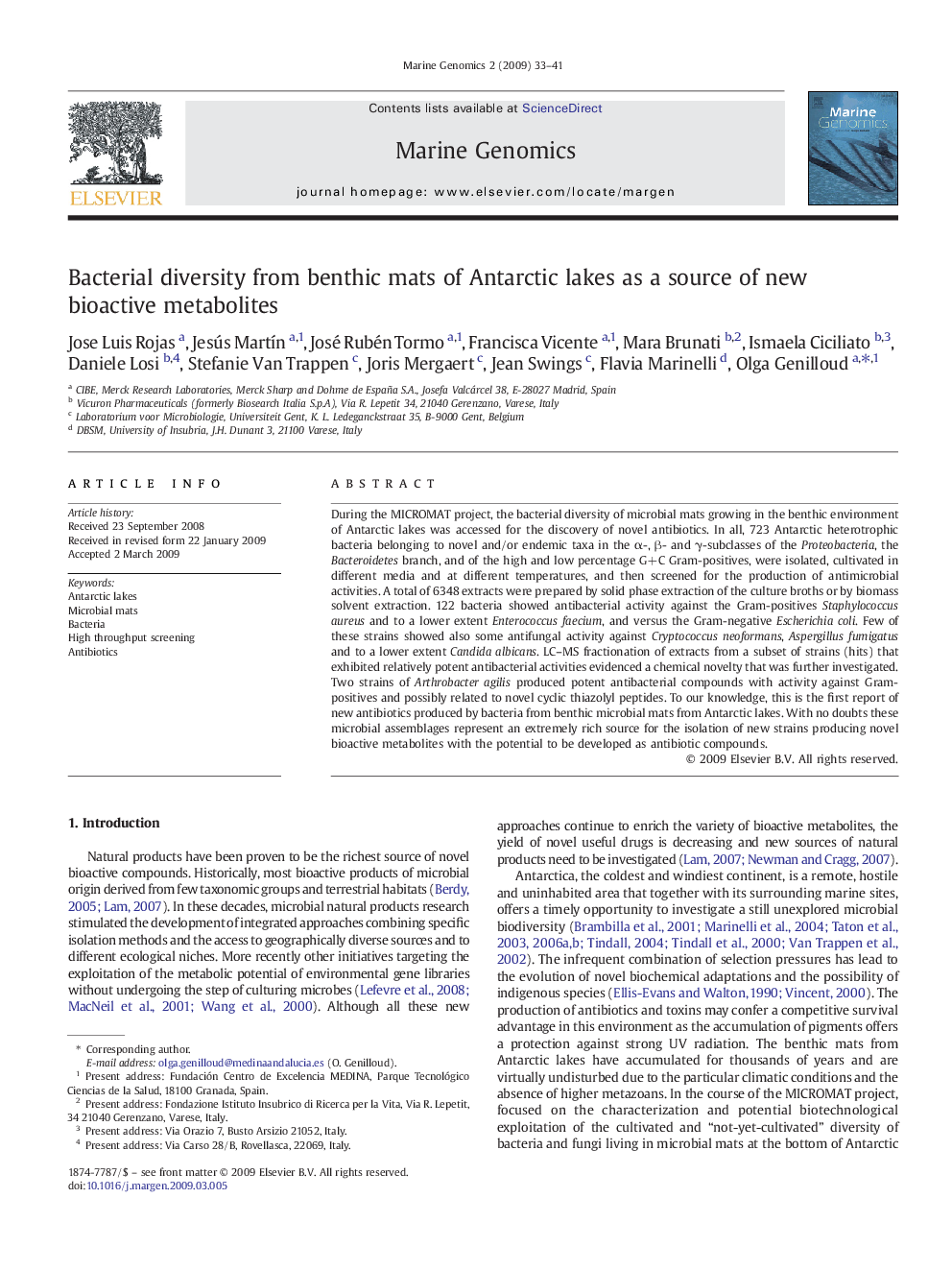| کد مقاله | کد نشریه | سال انتشار | مقاله انگلیسی | نسخه تمام متن |
|---|---|---|---|---|
| 2058326 | 1076220 | 2009 | 9 صفحه PDF | دانلود رایگان |

During the MICROMAT project, the bacterial diversity of microbial mats growing in the benthic environment of Antarctic lakes was accessed for the discovery of novel antibiotics. In all, 723 Antarctic heterotrophic bacteria belonging to novel and/or endemic taxa in the α-, β- and γ-subclasses of the Proteobacteria, the Bacteroidetes branch, and of the high and low percentage G+C Gram-positives, were isolated, cultivated in different media and at different temperatures, and then screened for the production of antimicrobial activities. A total of 6348 extracts were prepared by solid phase extraction of the culture broths or by biomass solvent extraction. 122 bacteria showed antibacterial activity against the Gram-positives Staphylococcus aureus and to a lower extent Enterococcus faecium, and versus the Gram-negative Escherichia coli. Few of these strains showed also some antifungal activity against Cryptococcus neoformans, Aspergillus fumigatus and to a lower extent Candida albicans. LC–MS fractionation of extracts from a subset of strains (hits) that exhibited relatively potent antibacterial activities evidenced a chemical novelty that was further investigated. Two strains of Arthrobacter agilis produced potent antibacterial compounds with activity against Gram-positives and possibly related to novel cyclic thiazolyl peptides. To our knowledge, this is the first report of new antibiotics produced by bacteria from benthic microbial mats from Antarctic lakes. With no doubts these microbial assemblages represent an extremely rich source for the isolation of new strains producing novel bioactive metabolites with the potential to be developed as antibiotic compounds.
Journal: Marine Genomics - Volume 2, Issue 1, March 2009, Pages 33–41